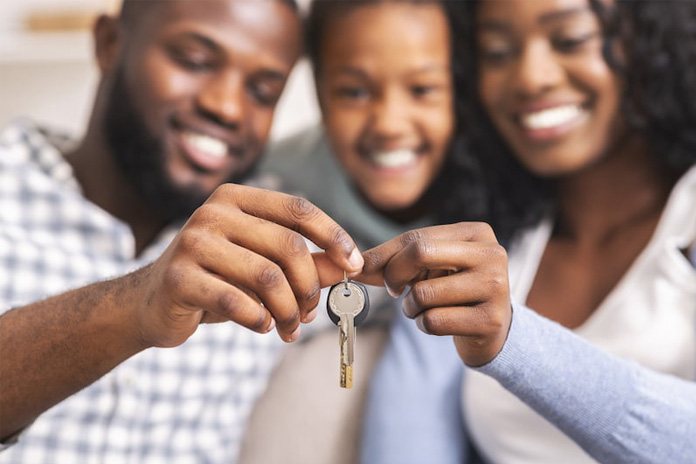First Time Home Ownership
by: Hannah Beard
If you didn’t grow up around people actively involved in real estate, it can be one of those things that you always hear of but don’t really know much about. Similarly with homeownership, it’s something that many people anticipate in the future, but don’t have an idea of where to start to get there. Unfortunately, a lot of Gen Z and Millennials also see it as something completely out of our reach within our lifetime, which is understandable given our historically high costs of living and underpaid salaries (and the virus in the room: the risk of instability given the current pandemic).
The good news is that it doesn’t have to be that way. It isn’t easy though, by any stretch of the imagination. In fact, according to a survey by Homes.com, 40% of Americans said that buying a home is the most stressful event in modern life (so we can imagine that it’s even more stressful in The Bahamas!). However, it can be a lot less daunting when you know what you’re heading towards. It took me 2-3 years, from the day I started casually browsing real estate websites until the day I signed the conveyance papers for my property, so I had a pretty good idea of how to get where I was going. This unfortunately still didn’t protect me from all the discouraging roadblocks I encountered along the way.
After going through it myself at such a young age, I want to give others encouragement that they’ll be able to achieve one of the toughest yet most fulfilling and worthwhile investments someone can make – even if it’s a few years down the line when Covid-19 may not be such a looming threat to the economy. So here is a list that I’ve compressed as much as possible, on what to expect when you’re planning to buy any property in The Bahamas:
- The first thing to do is to familiarize yourself with the Bahamian real estate market. Check out a few different websites to get an idea of what things cost in the areas you think you’re interested in; this will help you in visualizing the amount of savings you should be aiming for to get ready for that downpayment. Distressed properties advertised by local banks are a cheaper alternative to those actively on the market by motivated sellers, however these properties often sell very quickly – before you can even arrange a viewing.
- Speaking of down payments, keep in mind that they are generally 10% of the purchase price. So if you have a property worth $200,000, you will need a downpayment of $20,000. The percentage required to be paid down may vary by bank or lending institution, and ultimately the seller of the property decides how much they want you to put down. Generally though, 10% is the golden requirement for a starter property.
- The next, very important step can come before or after you have your down payment ready, but it’s probably best to have a significant amount saved before it. This step involves arranging to meet with different banks or lending institutions to get prequalified. A prequalification will tell you the maximum amount you’ll be allowed to borrow safely, so this will give you a realistic idea of what price range of properties to be looking at.
At the prequalification meeting, take any supporting documents you can (payslips, evidence of additional income, bank statements, etc.) to convince them that you are responsible enough to pay back anything that they may be willing to loan. Most institutions here only lend to people who have been in a full time position for at least two years, however it may be possible to negotiate this or to just set up a meeting to get your foot in the door before you reach that milestone. Also at the meeting, you will discuss the bank or lending company’s lending policies, such as interest rates on loans, payback periods and conditions (such as if you choose to pay it off early, or miss payments).
I estimate that the average conditions in The Bahamas for a young person on their first loan are: around 6% interest rate, 30 year payback period and 10% down payment. You can plug these figures in to mortgage calculators on local real estate websites to figure out what your potential monthly payback to the bank would be in these conditions. Not all of these are the same for every institution, so this is why it’s important to speak to several to figure out which works best for you.
- Once you’re pre-qualified and find a property you think you like, arrange a viewing with the real estate agent (or seller if you’ve managed to find a property being sold directly by the seller). At the viewing, you can discuss what you’re pre-qualified for so that the real estate agent and seller know that you’re a serious and prepared buyer. Remember that it’s common to negotiate prices in real estate, so you can discuss different prices based on how motivated and willing the seller is. Always look at a few properties to make sure that the one you’re going with really suits you, since it’s such a huge commitment.
- After deciding on a property, go back to the bank or lending institution you’ve decided to borrow from and tell them what you’ve decided on. They will give you a list of documents to prepare for your application and a list of approved lawyers to choose from who will represent you in the sale. Not all lawyers charge the same rates, so consult a few different people before choosing who you go with.
- Your lawyers and the seller’s lawyers will then arrange the conditions of the sale (down payment amount, amount of time to be taken for the sale, etc.) and prepare the sales agreement. The sales agreement will probably be the last document you need to submit your application to the bank or lending institution, so submit it as soon as possible after signing. It may take around a month or so for the loan to be approved or rejected.
- After approval, you will sign a contract with the bank or lending institution and your lawyers will also prepare the conveyance documents for the sellers to officially sell the property to you, and legal mortgage documents obligating you to repay the bank or lending institution as discussed.
During this period, the bank will hold your total fees, including legal fees (around 2.5% of the total mortgage), Stamp Tax on the conveyance of the property (10% for properties over $100,000 or 2.5-8% for properties less than $100,000; this is normally split half-half between the seller and buyer but the seller has the final decision) and additional tax at 1% of the loan amount. After the sale, this total amount will be released for your lawyers to pay to the respective offices. These are not included in the down payment, and therefore these fees are an extra expense on top of the original 10% paid down at the start of this process. These fees are all very important to discuss before signing anything, but your loan officer and lawyers should advise you on these when you first approach them earlier in the process. First time homeowners may be exempt from paying stamp tax on their first home, but this varies.
When put into a condensed, 7-point list, the process may not seem so daunting, however it is a very time-consuming and stressful experience. Going into it having a clear vision of exactly what to expect can be a great help for making it as smooth and stress-free as possible. Even if you have no plans to or don’t think you’re able to buy real estate in the immediate future, it’s good to visualise how the process will go when you do get there, and help to give you the motivation to achieve it.



Leave a Reply